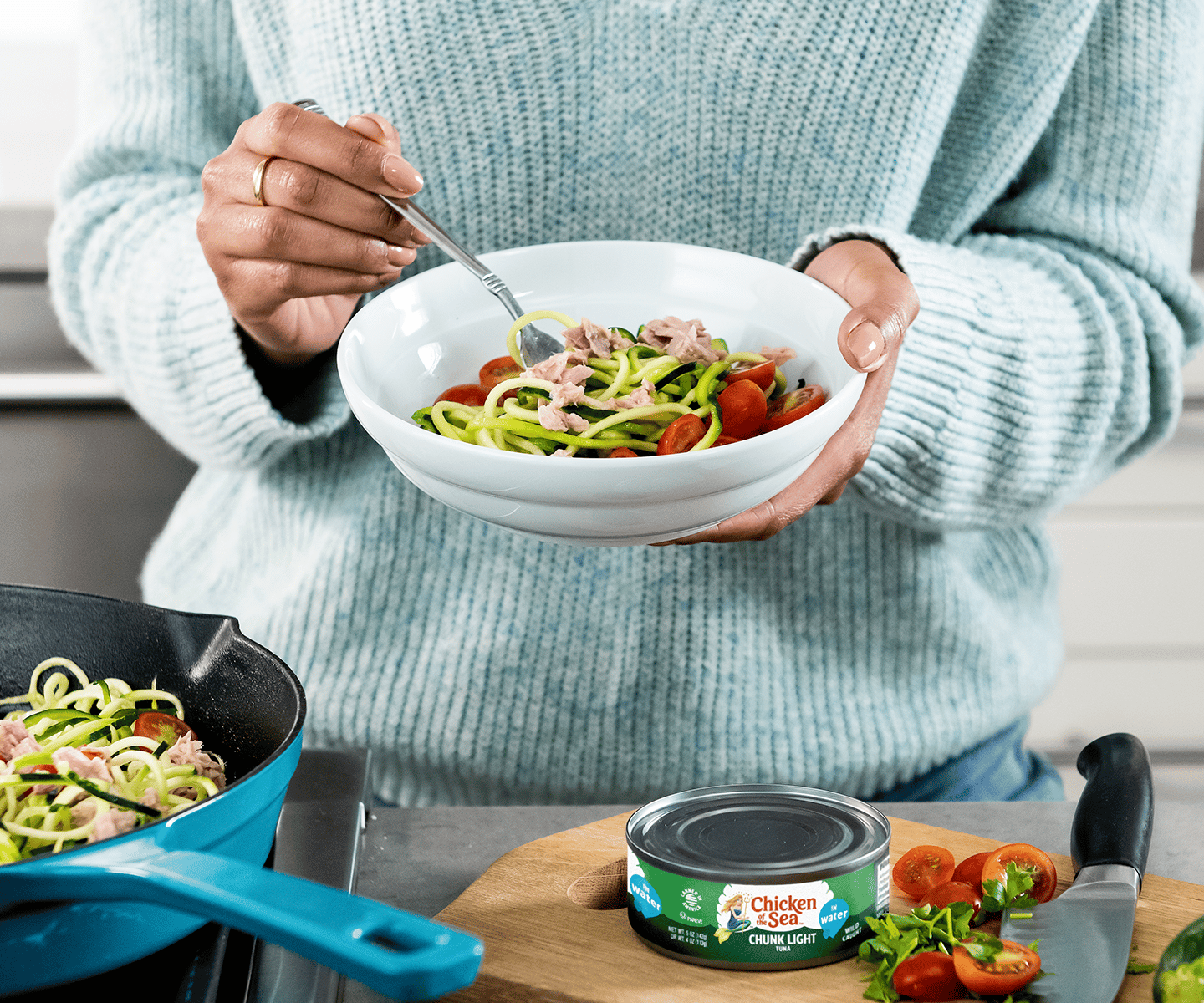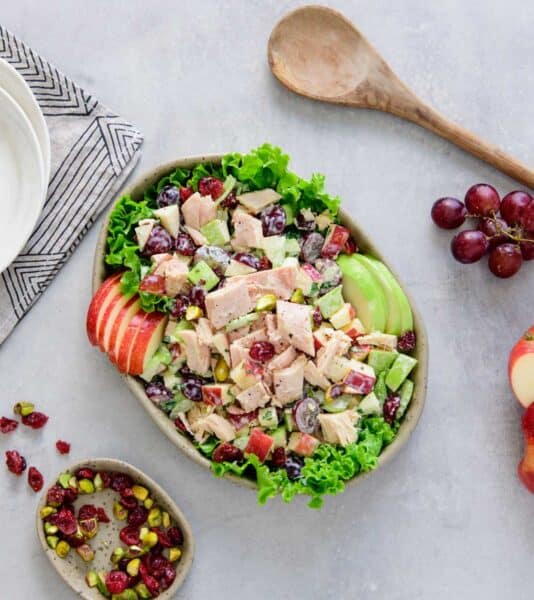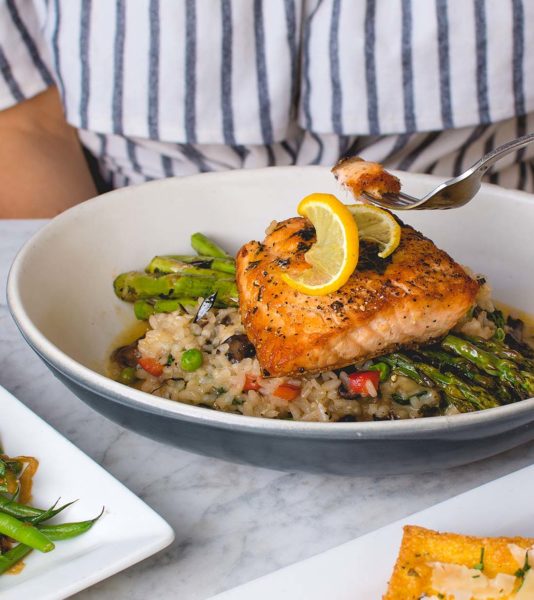The guidelines are a dense and technical 204 pages, not exactly a fun read (even if you’ve been getting your brain food!). We dove in and pulled out the most interesting information about “the total package of nutrients that seafood provides” and how it can help you feel and look your best.
Skinnier Jeans, Stronger Heart
Studies have shown seafood has positive impacts on hearts and waistlines. Diets that include seafood are associated with a reduced risk of cardiovascular disease and a reduced risk of obesity. And, in even better news, eating seafood with EPA and DHA omega-3 fatty acids is associated with reduced cardiac deaths—even among those with cardiovascular disease.
According to the American Heart Association, albacore tuna is a particularly rich source of omega-3s, along with salmon, mackerel, herring, and sardines.
Healthier Moms and Infants
Because of an association with improved infant health outcomes, like improved nervous system development, the guidelines recommend that pregnant or breastfeeding women get eight to 12 ounces of seafood per week.
Just make sure to choose options that are sources of the DHA omega-3 fatty acid and lower in methyl mercury—like salmon, anchovies, herring, shad, sardines, Pacific oysters, trout, and Atlantic and Pacific mackerel (rule of thumb: smaller fish absorb less mercury).
Beyond Sun and Supplements
Vitamin D is unique because it can be obtained through food and sunlight. Problem is, more of us are working indoors, wearing sunscreen, or otherwise limiting sun exposure and very few foods naturally contain vitamin D according to the National Institutes of Health. In fact, officials say vitamin D is “underconsumed” by many causing health concerns.
So where can you get more of this important nutrient? Among the best food sources of vitamin D are fatty fish, like salmon, herring, mackerel, sardines, and, of course, tuna.
Getting the Most Benefit
You can see why seafood should be more than just an occasional dinner staple. The guidelines suggest incorporating seafood as the protein choice in two meals a week (replacing meat, poultry, or eggs) in order to get the recommended amount—eight or more ounces a week for adults.
Want some additional inspiration? We’ve got more than 40 recipes for tuna alone—check out delicious salads, sandwiches, suppers and more. And for more great ideas, visit our main recipe page, where you can sort recipes by meal course, by type of seafood, or by recipe collection.
Visit ChooseMyPlate.gov for more information about the latest guidelines—plus tips, resources, and online tools for adults, kids, and educators.







